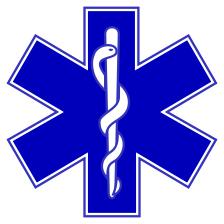 What is an emergency medical technician? He or she is the first person you want to see when an accident or emergency leaves you dazed or hurt. Emergency medical technicians are first responders who arrive with the ambulance, prepared to stabilize and begin treatment on anyone who needs it and to provide transport service to the hospital as necessary. They work alongside firefighters, police officers and other emergency responders to help bring about the best possible outcome in a bad situation.
What is an emergency medical technician? He or she is the first person you want to see when an accident or emergency leaves you dazed or hurt. Emergency medical technicians are first responders who arrive with the ambulance, prepared to stabilize and begin treatment on anyone who needs it and to provide transport service to the hospital as necessary. They work alongside firefighters, police officers and other emergency responders to help bring about the best possible outcome in a bad situation.
What is an Emergency Medical Technician?
According to the National Association of Emergency Medical Technicians, there are actually four levels of emergency medical technicians, or EMTs. Emergency medical responders are the lowest ranking EMTs. They can help with transport and provide the most basic of interventions, but typically are not qualified to be a primary caregiver at an accident scene. On the second rung of the ladder, emergency medical technicians are able to offer additional noninvasive interventions and are better trained in safe transport. Advanced emergency medical technicians are allowed to perform high-benefit, low risk advanced interventions. Paramedics, sometimes called EMT-Ps, have the most extensive skill set. They can operate complex medical equipment and conduct a wide array of medical interventions, including those that call for medications and invasive techniques.
What Education is Required To Become an Emergency Medical Technician?
Requirements for EMTs are typically set by the individual states; not every jurisdiction uses the same terms, rankings or requirements. Aspiring medics should check with their jurisdiction for details. Licensure at the initial levels of emergency medical technicians typically requires that EMTs begin as the bottom of the emergency personnel ladder and progress through the ranks as they gain experience and complete additional education. Many community colleges offer non-degree programs for EMTs. In order to become certified paramedics, students must have a substantial amount of field experience, earn an associate or bachelor’s degree from a nationally accredited program, and pass the National Registry of Emergency Medical Technician exam.
What is a Typical Day Like for an Emergency Medical Technician?
The nature of the job means there is no typical day for EMTs. Whether they work for a fire department, private ambulance service, hospital or local government, EMTs will spend at least a portion of their day on the paperwork and other chores that keep their organization running smoothly. Continuing education is also a common task. But, responding to an emergency takes precedence. EMTs can be called to the scene of a car accident, a fire, a sudden illness or even an unexpected childbirth. Night or day, they must always be prepared to offer assistance at a moment’s notice. With lives sometimes hanging in the balance, it is an incredibly intense job that can be very hazardous since EMTs often work in less than ideal circumstances with upset, highly emotional people.
What is the Job Outlook for Emergency Medical Technicians?
As with much of the medical field, the need for EMTs and paramedics is expected to grow as the United State’s aging population demands more health care services. The U.S. Bureau of Labor Statistics predicts job opportunities for EMTs and paramedics will grow by nearly 25 percent in the next decade.
Related Resource: Emergency Dispatcher
Emergencies arise when they are least expected. Fortunately, EMTs and other first responders are ready and willing to offer their help to those who need it. If you are interested in a career as a first responder, understanding what an emergency medical technician is and the services he or she can offer can help you decide if this is a career you would like to pursue.